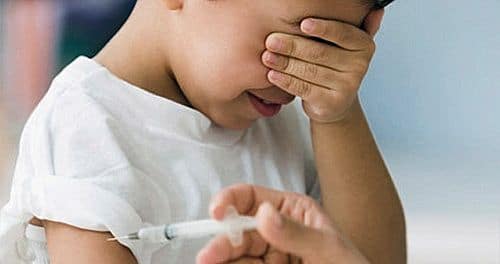
The decline in vaccinations and the measles epidemic in the USA. A measles epidemic could cause hundreds of thousands of cases and thousands of deaths
L he Ebola outbreak in West Africa has caused the collapse of health facilities, leaving more and more children without vaccination coverage. A measles epidemic, for example, could cause hundreds of thousands of cases and thousands of deaths, as shown by a simulation, which also warns of the possible effects of lack of vaccinations against polio, tuberculosis, tetanus and diphtheria.
he Ebola outbreak in West Africa has caused the collapse of health facilities, leaving more and more children without vaccination coverage. A measles epidemic, for example, could cause hundreds of thousands of cases and thousands of deaths, as shown by a simulation, which also warns of the possible effects of lack of vaccinations against polio, tuberculosis, tetanus and diphtheria.
The Ebola virus has hit the populations of West Africa hard: 14,200 cases have been confirmed in Guinea, Liberia and Sierra Leone, and more than 9,500 have died. But there is a secondary effect of this epidemic that can have an equally devastating impact: the collapse of numerous health facilities, which has left a part of the child population without vaccination coverage for various diseases. The alarm has been sounded in Science magazine by researchers at Johns Hopkins University led by Justin Lessler, who carried out a simulation on the possible health effects of a measles epidemic, based on data from the World Health Organization (WHO) and the Demographic and Health Surveys, programs aimed at obtaining accurate data on demographics and health status, of the three African nations.
Vaccinations have achieved many important successes in recent decades. Thanks to WHO's Expanded Program on Immunization (EPI) and periodic supplementary campaigns, annual infant mortality worldwide has decreased from 900,000 deaths in 2000 to 400,000 in 2010. Measles is a case in point of this success: the deaths are from 499,000 in 2000 to 102,000 in recent years. In particular, in New Guinea, Sierra Leone and Liberia there were about 94,000 cases of measles in the decade 1994-2003 and fewer than 7,000 between 2004 and 2013.
In the first months of 2014, that is, before the Ebola epidemic began, overall in the three countries considered, around 778,000 children aged between nine months and five years, about four percent of the population, were excluded from measles vaccination. Lessler and colleagues used a sophisticated model to predict infection rates, assuming a 75 percent decrease in the number of vaccinations, a realistic estimate, according to available Demographic and Health Surveys data, although there is no reliable data on the actual number. of vaccinations. The health effects of a possible measles epidemic after 6, 12, and 18 months of permanence of this dramatically low level of vaccinations were then estimated.
 According to projections, after 18 months unvaccinated children would rise to 1,129,000, an increase of 45 percent. For every additional month of interruption, there would be 20,000 more children exposed to the infection. A regional measles outbreak would have caused about 127,000 cases before Ebola; after 18 months of a 75 percent reduction in vaccinations, there would be 227,000 cases. These figures are made even more dramatic by the fact that most of those infected would be very young children, at greater risk of complications: this would translate into an increase in deaths of between 2,000 and 16,000, a number comparable to the deaths from Ebola recorded so far .
According to projections, after 18 months unvaccinated children would rise to 1,129,000, an increase of 45 percent. For every additional month of interruption, there would be 20,000 more children exposed to the infection. A regional measles outbreak would have caused about 127,000 cases before Ebola; after 18 months of a 75 percent reduction in vaccinations, there would be 227,000 cases. These figures are made even more dramatic by the fact that most of those infected would be very young children, at greater risk of complications: this would translate into an increase in deaths of between 2,000 and 16,000, a number comparable to the deaths from Ebola recorded so far .
“The secondary effects of Ebola could be devastating in terms of the number of people infected and the resulting deaths,” Lessler explained. “Measles to avoid the worst in the event of a measles outbreak are relatively cheap and easy to implement because they are based on resuming vaccination campaigns.”
Lessler and colleagues' simulation was for measles, but the same kind of projections could be made for other equally dangerous diseases. The Ebola epidemic has in fact also slowed down the administration of the vaccine against polio, the one against tuberculosis and the pentavalent one, which protects against the bacterium Haemophilus influenzae type b (which causes meningitis, pneumonia and ear infections), whooping cough, tetanus, hepatitis B and diphtheria. The care of patients with malaria, HIV and tuberculosis has also been severely limited by the Ebola epidemic, with a huge impact on public health. “These effects risk eroding the significant advances in the control of these diseases in recent decades,” Lessler concluded. "It could be a long time before efficient health systems are re-established in these regions."
March 13, 2015 – The Sciences Italian Ed. of Scientific America
The decline in vaccinations and the measles epidemic in the USA
Epidemiological data confirm the responsibility for the drop in vaccinations in the resurgence of measles infections in the United States, where the virus had practically been eradicated since 2000 thanks to the diffusion of trivalent serum. In California, Arizona and Illinois, vaccination rates are between 50 and 86 percent, well below the 96 to 99 percent needed to protect the entire community.
 Inadequate immunization coverage was a major factor in the recent measles outbreak that swept across the United States, particularly California, Arizona and Illinois, starting in December of last year. This is the conclusion of an analysis of epidemiological data published in the journal “JAMA Pediatrics” by a group of researchers from Boston Children's Hospital.
Inadequate immunization coverage was a major factor in the recent measles outbreak that swept across the United States, particularly California, Arizona and Illinois, starting in December of last year. This is the conclusion of an analysis of epidemiological data published in the journal “JAMA Pediatrics” by a group of researchers from Boston Children's Hospital.
In the United States, measles had been practically eradicated since the year 2000, thanks to the diffusion of the trivalent serum against measles, mumps and rubella: in the last 15 years there have been only a hundred registered cases. In 2014 alone, however, there were 644 infections.
The latest epidemic, which began just before last Christmas and continued in the first months of 2015, had Disneyland as its epicenter. The Californian amusement park is one of the busiest tourist sites in the world and therefore it is an ideal place for the infection rate to reach the highest levels. The virus, according to what has been possible to reconstruct, arrived with a tourist between 17 and 20 December, and immediately managed to infect five park workers and various visitors, to the point of forcing the authorities to prevent access to people not covered by the vaccine.
Some experts had already speculated that the measles upsurge was due to the decline in the vaccination rate of American children. Also in the United States, as in other parts of the world, a climate of distrust has spread towards vaccines due to rumors - categorically denied - according to which they could cause serious and disabling diseases, such as some forms of autism.
Boston Hospital researchers have now analyzed the available epidemiological data, rigorously demonstrating for the first time that reduced vaccination coverage in the population has had a directly detectable effect in the spread of measles.
Measles is a highly contagious disease: it is estimated that an infected individual, in a population fully exposed to the risk of contagion, i.e. not vaccinated, transmits the virus to 11-18 other people. The study showed that the vaccination coverage rate in the three states considered, California, Arizona and Illinois, is between 50 and 86 percent, therefore well below the 96-99 percent needed to have a protective effect on the whole community.
"The data we've collected tells us one very simple thing: the way to stop future measles outbreaks is vaccination," said John Brownstein, senior author of the paper. “The fundamental reason we see this high number of cases is that there was not adequate coverage in the exposed population.”
Using the same database, the team also developed an interactive model illustrating how different vaccination coverage rates affect the spread of measles. The model predicts, for example, that in a population totally protected from contagion, there would be only two cases of measles every 70 days, while if only 60 percent of the population were vaccinated, the cases would be 2,800.
"We hope these data will encourage families to work together to return child immunization to peak levels, helping to contain the epidemic," Brownstein said.





